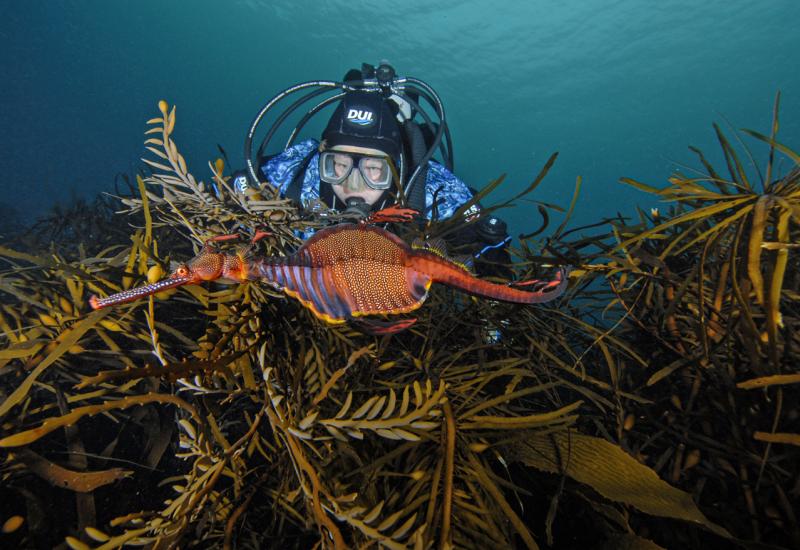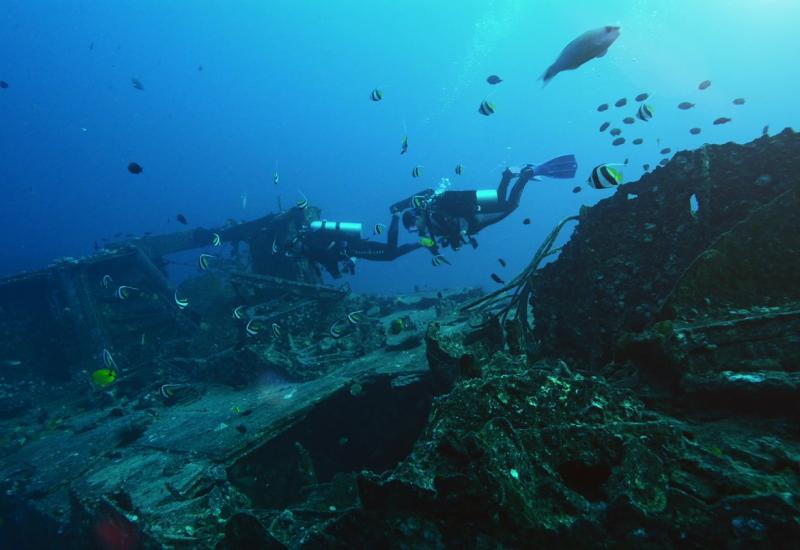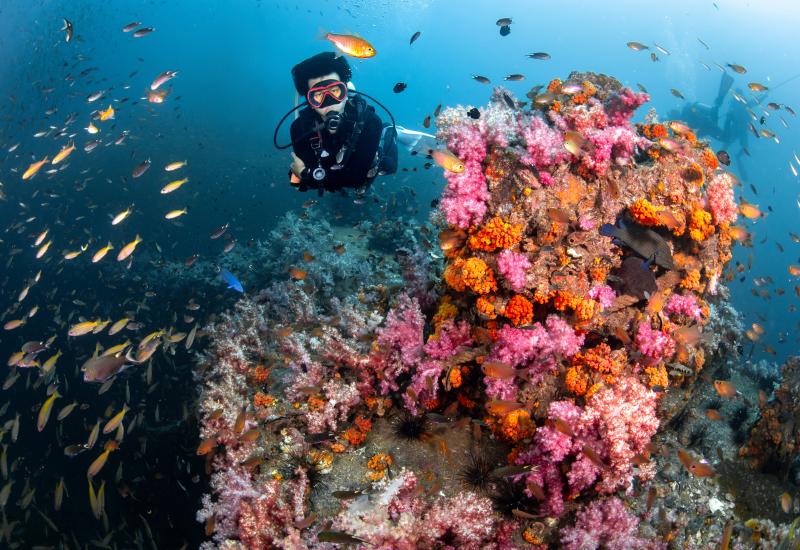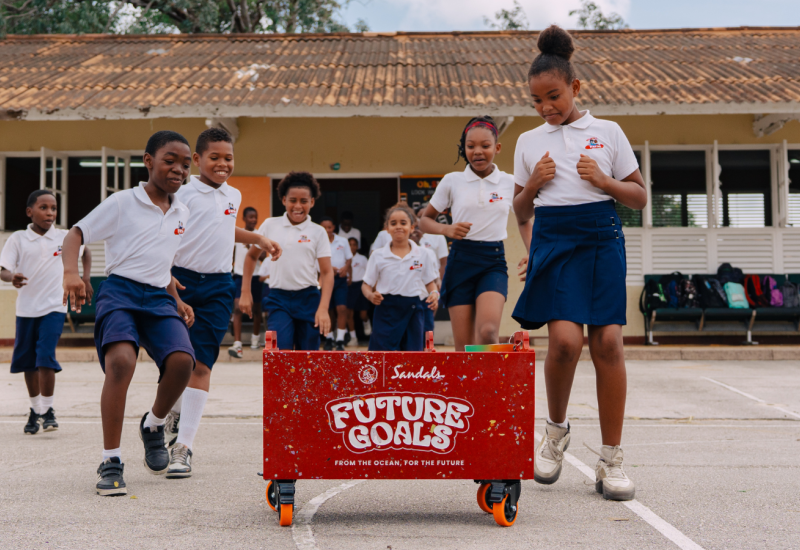Inside An Action-Packed Family Dive Trip in Panama's Coiba National Park

Paul IarocciNestled in the remote fishing village of Pixvae, Ark Divers Scuba Lodge is a complete retreat.
We were halfway to Coiba Island when the fins of a female humpback whale and her calf broke the steel-gray water’s glassy surface. Mancho, our captain, cut the engine to let them pass in peace. Under my awe, I couldn’t shake the feeling that something’s off. I finally put my finger on it: the silence. There was no distant hum of traffic, no boats, no light breeze or even water lapping the hull. I looked around and found zero evidence of another human being, not even a single far-off boat. Suddenly, the complete absence of sound was not strange. It became intoxicating.
I’d begun researching Coiba National Park a few months prior, on the hunt for a family dive destination that would let my wife, Cindy, and I spend uninterrupted time with our soon-to-be-teenage daughter Cap. Each had 10 dives under her weight belt, and Cap’s cert card was newly printed, but I still wanted something challenging and out of the ordinary. A family vacation to remember.
Nearly 12-and-a-half miles off the coast of Panama, this UNESCO World Heritage site and marine protected area contains 38 islands. It’s part of the Tropical Eastern Pacific pelagic transit route that includes the ever-popular Galapagos and the Cocos Islands, but has far fewer visitors. It looked like the perfect opportunity for an off-the-well-finned-path adventure—wild Pacific Ocean diving that would deliver different topography, unfamiliar fish, large fauna and few other divers.
Typically, Cobia divers take day boats from the surf town of Santa Catalina. These are long, rough rides in pangas, the sturdy fiberglass boats popular in the region. Given the near certainty of bad weather at least some point during the trip, I didn’t think this was going to work for my family. Then I stumbled upon a remote, hard-to-access fishing village called Pixvae connected to Panama’s generally excellent road system by an atrocious clay and rock mountain track, suited only to a proper 4x4 and a skilled driver. The road can be avoided by a serene 40-minute panga ride through a mangrove labyrinth from Puerto Vidal, the nearest coastal settlement with paved road access. Staying here would cut the boat rides in half.
Pixvae is far from an international dive hub. It's not on the electrical grid, water comes untreated directly from the river, and most everyone gets around by horse or foot. There is only one dive shop here: The Ark Divers Scuba Lodge, which opened a few fortuitous weeks prior to the start of my research. This brand new solar-powered dive lodge is three raised guest cabanas along with a guest lounge, bar and dining area, all perched high above the village. It’s a great vantage to watch the ever-changing weather over the bay and the islands beyond.

Paul IarocciCap enjoys her first foray into rugged Pacific diving after getting certified in the tranquil Caribbean.
We committed—and reaped pelagic rewards.
The sites selected by Mike Ritter, the Ark co-owner and our PADI Advanced Open Water instructor, were shallow and well-protected. Usually close to an island, the rocky reefs and steep slabs sloping toward a sandy bottom hosted an expulsion of life above 60 feet: Schooling jacks and barracuda, several species of eel, octopus, a multitude of white tip reef sharks and even bull sharks. Chromis swarmed in the blue above the reefs.
During one action-packed dive, we came upon a mass of yellow goatfish stirring up the sand. In a flash, a white tip reef shark swam straight into the ball. We watched a massive blunthead triggerfish building his nest in the sand, spied an eel-grouper hunting pair at work, and witnessed the twirling mating ritual of love-struck starry morays. On another, flag cabrilla lazed on coral-encrusted rocks and shy jewel morays peered out from their lairs. A pair of coral hawkfish seemed to inhabit every cauliflower coral head. Inspecting more carefully, we would sometimes find an arrowhead crab lurking deeper within the orange branches.

Paul IarocciCap (left) and Cindy (right) enjoy a family meal at Ark.
One morning dolphins approached the surface just as we were descending. The same day, while Cindy and I were enjoying our third dive, Cap sighted jumping mobula rays while relaxing on the boat. There was life at every angle.
Getting to these gorgeous dives wasn’t without a transition. Variable conditions, changing currents and some surge and a max visibility of 50 feet worried Cap during her first few dives. This was not her childhood snorkeling and first dives in the clear Caribbean. She soon settled in, however, and I loved watching her become a resilient diver, focused and hyper-aware of the fauna right in front of her mask.
We did three dives daily and whiled away our surface intervals eating papaya and shrimp salad rolls on some impossibly beautiful stretch of beach on whatever uninhabited island was closest that day. There was never a rush. Mike has a love of diving, an excess of patience, and indefatigable energy that extends at both ends well past the eight-hour daily outings. Divemaster Audrey, the Ark’s other half, was always waiting at the dive shop in the afternoon to take us back up the hill for cocktails and appetizers—but not before stopping at different village houses to pick up fresh fruit, vegetables or eggs that would be later concocted into some glorious part of breakfast or lunch. Eventually, after prepping for the next day, Mike would show up and the five of us would break out the fish ID books to excitedly relive our day in the water before sitting down together to a family-style meal.
For us, it wasn’t just the spectacular diving that made the trip special. It was the remote, wifi-free setting, the tumultuous weather, exotic fruit, the shy village children and their stoic parents, and the inspiring couple behind the Ark. Mike and Audrey came to Pixvae with little more than a tent and an idea and worked hard with the people of Pixvae to realize their vision. One doesn’t need a grasp of Spanish to understand how the two foreigners and the villagers admire and care about each other.

Jayson PhotographyA starry moray pokes out of its crevice.
We arrived full of nervous energy and trepidation. Would it be too remote, too buggy, too stormy? Would the diving be too difficult for a child? We left literally in tears, realizing the very things that worried us were what we would miss most.
One day, pavement will replace the washed-out track that leads from forgotten Pixvae to Soná, the edge of modern Panama. And then things will change. Plan a trip sooner than later.
Are you ready to step up, help save the ocean, and #LiveUnfiltered at the same time? Sign up for a PADI Open Water Diver course now.










